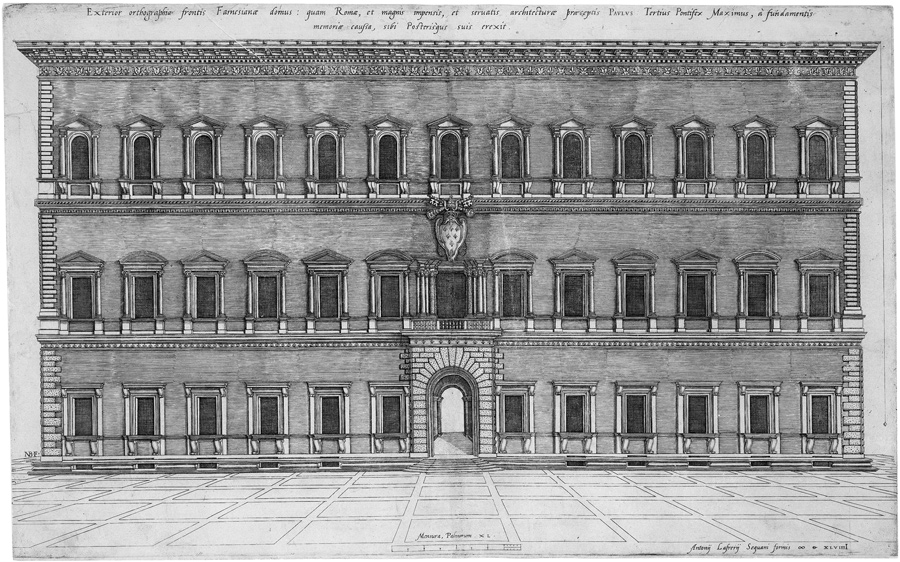Loading the page ...
Nicolas Beatrizet
(1515 Thionville – 1565 Rome)
The Façade of the Palazzo Farnese in Rome. Two engravings, each measuring approx. 33.7 x 53 cm. Bartsch XV, 270, 102; Robert-Dumesnil IX, 175, 105 (Salamanca) and 176, 106 (Lafreri); Huelsen 1921, 162, No. 102 A (Lafreri), 102 C (Salamanca).
After moving to Rome in or about 1540 Nicolas Beatrizet was first employed as an engraver by local publishers, such as Antonio Salamanca and Tommaso Barlacchi. From 1547 to 1560 the artist worked in the influential publishing house of Antonio Lafreri before setting himself up as an independent publisher around 1558. Under the influence of Enea Vico and Giorgio Ghisi, Beatrizet gradually developed an arresting and technically sophisticated engraving style.
The two engravings by Beatrizet show the façade of the Palazzo Farnese in Rome. Built by Antonio da Sangallo and Michelangelo, it was one of the most celebrated buildings of its day. A comparison of the two engravings also yields interesting information about the printmaking trade in Rome at that time, especially about the rivalry between the two best known publishers of engravings: the Frenchman Antonio Lafreri (1512– 1577), who had come to Rome about 1540, and the Spaniard Antonio Salamanca (1478–1562), who had settled in the Eternal City back in 1505.
Both publishers specialized in the marketing of prints of both ancient and contemporary Roman edifices, for which they engaged Beatrizet, among others, as an engraver. The engraving published by Lafreri belongs to the Speculum Romanae Magnificentiae, an album containing views of the most artistically significant buildings in Rome. Reproductive engravings of selected masterpieces of classical sculpture were also included. Lafreri’s great success was partly the result of an intelligent business plan that offered visitors to Rome an opportunity to select engravings in keeping with their personal preferences and financial means and have them bound as a private anthology. The 1540s in particular witnessed a bitter rivalry between Lafreri and Salamanca. Over a longish period the two rivals copied each other’s engravings, so that today it is not quite clear who deserves the credit for being the first to publish what. Finally, weary of the struggle, Salamanca and Lafreri decided in 1553 to end their competition and found a joint enterprise that lasted until Salamanca’s death in 1562. The two views of the Palazzo Farnese arose shortly before the beginning of the period of peaceful coexistence. In this specific instance both engravings were executed by the same author, Nicolas Beatrizet. The differences in each case are minimal, the most striking feature being the difference in typography. Bartsch and Huelsen took the view that Salamanca’s version of the engraving was the first, while Michael Bury supposes the opposite, maintaining that the print published by Salamanca is a mirror-image copy of Lafreri’s engraving (see M. Bury, The Print in Italy. 1550–1620, London, 2001, p. 122; No. 89, p. 141).
Superb impressions. Lafreri’s print with the platemark on three sides and with a narrow margin at the bottom. Unobtrusive central fold, very minor traces of handling, otherwise in excellent condition. The Salamanca print trimmed to the platemark on all sides. Slight traces of handling, otherwise in excellent condition.
